Michael Christopher Duda Center for Preservation, Resilience, and Sustainability
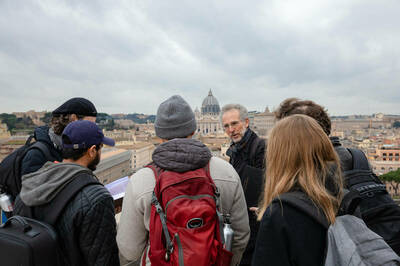
The Michael Christopher Duda Center for Preservation, Resilience, and Sustainability was established in 2021 to offer the School of Architecture at the University of Notre Dame new and expanded opportunities to advance its mission, especially in the protection and conservation of “our common home,” as Pope Francis wrote in Laudato Si’.
University of Notre Dame Trustee Fritz Duda and his wife, Mary Lee, together with the family’s foundation made a $30 million gift to the University’s School of Architecture to establish a center dedicated to historic preservation and named in memory of the couple’s late son, a Notre Dame architecture alumnus who dedicated his too-brief career to historic preservation in Texas.
Read the center's newsletter Spring 2024 Fall 2023
Center for Resources
The Center is housed in the School of Architecture but serves as a hub for campus-wide work related to the Center’s objectives. The gift enables the School to expand its leading-edge curriculum in traditional architecture and urbanism, support hiring new faculty, sponsor national and international conferences, and provide financial assistance to graduate students enrolled in the Master of Science in Historic Preservation degree program. The Center will be an essential resource for teaching and research in the emerging field of historic preservation, community resilience, and environmental sustainability.
A Hub for Research
In pursuit of these themes the Center will provide resources in support of the academic program leading to the Master of Science in Historic Preservation (MSHP) degree, including full-tuition fellowships to attract and support a talented and diverse class of students and fund needed new faculty positions. The Center will underwrite educational expenses such as student design charrettes, class travel, public lectures by leaders in the field, conferences and exhibitions, and workshops or demonstrations offering opportunities for hands-on learning by students.
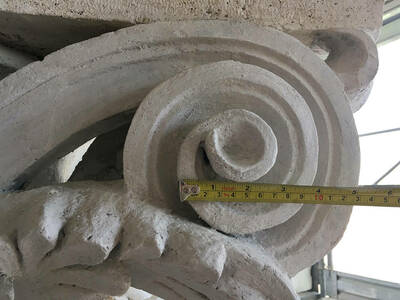
In addition to this support of teaching, the Center will sponsor essential research to articulate and propagate ways in which conservation of cultural heritage (both tangible and intangible) can inform and inspire new sustainable development at the architectural and urban scales. The Center will sponsor and disseminate multidisciplinary research that advances understanding and practice of preservation, resilience, and sustainability in the built environment. This research will focus on such topics as the recovery of historic building cultures, renewable and nonpolluting materials and methods, revival of historic trades and crafts, urban planning and land use that reduces dependence on fossil fuels, reform of building codes to facilitate historic preservation, international Charters and guidance on heritage conservation, and the protection of cultural landscapes and natural resources.
This research program will also be enhanced by a network of allies and collaborators including individuals, organizations, and institutions with which the School of Architecture has existing connections or those with which we seek new relationships. One example is the current agreement with the Smithsonian Institution in Washington, DC, to establish a network/directory of individuals and groups engaged in the practice of and training for traditional building trades and crafts.
In all of these ways, and possibly in others yet to be discovered, the Duda Center is a vital resource for the School in furthering its mission within the University and the world.
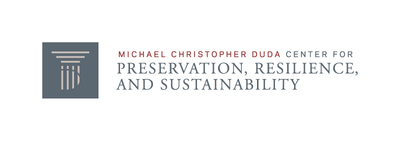
The Duda Center Faculty
Among the faculty for the Center are Steven Semes, director, and professors Selena Anders, Alan DeFrees, Stephen Hartley, Paolo Vitti, and Todd Zeiger.
The Duda Center Newsletter
Spring 2024
Inaugural Duda Forum in Dallas on Historic Preservation and Sustainable Development
The first Duda Forum on Historic Preservation and Sustainable Development brought together professionals, academics, developers, neighborhood advocates, and government authorities to explore the role of historic preservation as an effective partner of new development in Dallas, Texas, October 12-13.
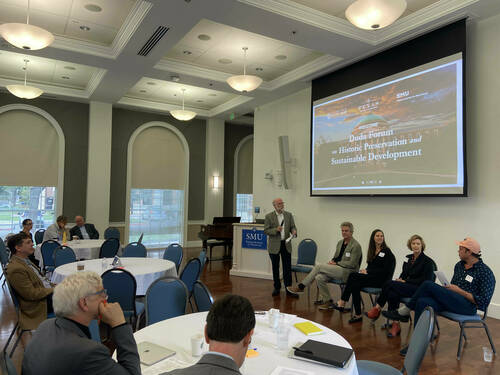
Keynote addresses by Vincent Michael, executive director of the Conservation Society of San Antonio, and Shanon Miller, preservation director for the City of San Antonio, illustrated the experience of their city as a preservation leader in Texas. Their presentations set the stage for a series of panel discussions examining adaptations for new uses of existing buildings of varying sizes and ages—primarily in Dallas—from modest, century-old neighborhood buildings to postwar, glass-walled office towers. Other presenters discussed conservation of neighborhoods and ways of promoting housing for diverse populations. One of the participants estimated that at least a billion dollars in development investment was represented in the room during the panel discussions.
The conference was the first in a planned series sponsored by the Michael Christopher Duda Center for Preservation, Resilience, and Sustainability at the University of Notre Dame School of Architecture; the Texas Historical Foundation; and the Folsom Real Estate Institute at Southern Methodist University, in memory of the late Michael Christopher Duda, a preservationist and Dallas native who was closely associated with all three institutions.
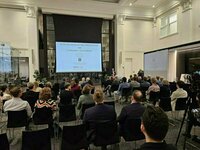
Conference participants noted that they gained greater appreciation for the successes of historic preservation initiatives in the Dallas area and the potential benefits of collaboration between preservation and development to build a stronger city, as well as to advance issues of sustainability and resistance to climate change. Planning has already begun for the second annual Duda Forum next year. More information will be available in coming months.
MSHP Students Learn Through Hands-on Conservation Practices
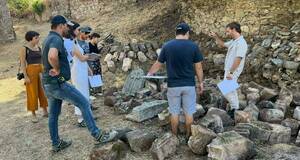
Among the strengths of the Master of Science in Historic Preservation (MSHP) program is the opportunity it offers students to learn about architectural conservation through direct hands-on experience, both here in the United States and internationally.
During their semester’s study in Rome, second-year MSHP students joined Professor Paolo Vitti on the island of Sardinia, where their historic preservation studio course focused on documenting and creating a conservation plan for the historic church of Saint Andrew in Orani. With the guidance of Professor Selena Anders and the aid of professionals from the University of Cagliari, the students created digital records of the ruined structure and surviving material and surveyed the existing conditions at the site. They then made graphic reconstructions of missing elements to visualize the original form of the church and indicate how it might be restored. Professor Nikos Vakalis offered lessons in conservation of fresco painting and other historic finishes, while Professor Lorenzo Fei conducted a class on the history of traditional masonry construction in Europe. The students reported their findings in a presentation to representatives of the Municipality at the end of the semester, laying the foundation for ongoing work in the years ahead, including assessment of heritage sites throughout the town. Other visits included training in digital documentation of heritage on the Greek island of Siros, a workshop with students of conservation at the Politecnico of Torino, a visit to the earthquake-damaged towns of L’Aquila and Norcia, and a tour of the art conservation laboratories at Veneria Reale.
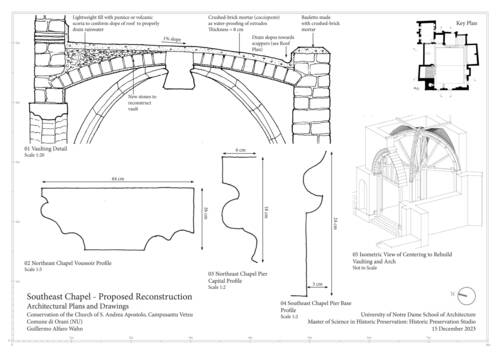
“The semester in Rome offers a unique opportunity for the students to work on layered heritage,” explains Professor Vitti. “Buildings with hundreds of years of history reveal a unique complexity that the architect needs to interpret in order to make appropriate interventions,” he said.
“The two-week experience at Orani is an exceptional opportunity offered by no other University course in preservation. Students work with their professors onsite to learn how to document and analyze built heritage, and the visits to noteworthy ongoing restoration projects and hands-on experience makes the Rome semester a culminating formative experience for the students,” he added.
Here at home, the first-year MSHP students worked at the Kizer House, a late 19th century residence in South Bend, where students made measured and analytical drawings of the interlocking masonry and timber systems in the structure.With instruction by Professor Stephen Hartley, students returned to study the original masonry, mortars, and tuckpointing by picking up a trowel under the supervision of experienced preservation craftsmen.
Faculty Profile
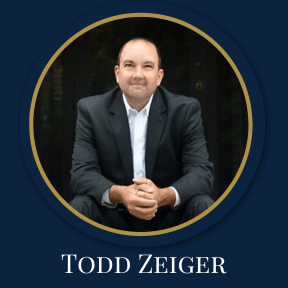
With a degree in historic preservation and minor in business from Roger Williams University in 1988 and Certificate of Executive Management from the University of Notre Dame in 2006, Todd Zeiger has built upon his passion for historic buildings over his 36 years in the field. His experience ranges from museum and non-profit management to building restoration, relocation and real estate development involving commercial, residential, and public buildings.
Joining the School of Architecture as an adjunct professor in 2008 teaching in the historic preservation concentration, he also works full time as the Director of the Northern Regional Office for Indiana landmarks, a position he has held since 1998. He provides a wide range of consultation, project development, and advocacy assistance to grass roots organizations, historic preservation commissions, Main Street communities and private building owners over a twenty-four-county area, overseeing two field offices.
His experience includes several years as the director of the Near Northwest Neighborhood, Inc, a neighborhood development, and community building organization. There he has overseen the development of affordable housing, community revitalization and social network programs.
Zeiger is a founding board member of South Bend TradeWorks, a local non-profit dedicated to increasing the ranks of contractors qualified and skilled to work on historic buildings – a national problem. In partnership with Indiana Landmarks, he develops workshops targeting all levels of experience and interest from simple historic building maintenance to window restoration and carpentry.
In addition to teaching in the Certificate of Historic Preservation Program, Zeiger now brings his field experience and historic preservation expertise to the Michael Christopher Duda Center for Preservation, Sustainability, and Resilience and the Master of Science in Historic Preservation. Through his classes in research and documentation, preservation theory and preservation practice, he is helping grow the next generation of preservationists. His classes couple theoretical learning with hands-on application of real-world practical experience involving historic buildings. Lecturing at state and national conferences and local talks and training workshops, he reaches and encourages a wide range of local groups and professionals alike.
Following graduation from Roger Williams University with a Bachelor of Science in Historic Preservation and cum laude Minor in Business Administration, he returned to his hometown to dedicate his career to helping save the architectural legacy left by the previous generations – the fingerprints of those who have come before us. He and his wife of 36 years, Terri, have three children. They reside in South Bend, Indiana, as the fifth generation on their historic farmstead along with two and a half horses, chickens, and other assorted pets. He is presently restoring a 1958 Chevy Impala convertible purchased by his father in the mid 1960’s with a 1939 Studebaker truck waiting in the wings
Read Todd Zeiger's curriculum vitae here.
Student Studio Projects Focus on Adaptive Reuse
During the fall semester, Professor Todd Zeiger led research and documentation with first-year students at the former administration building of the Studebaker Automobile Company near downtown South Bend.
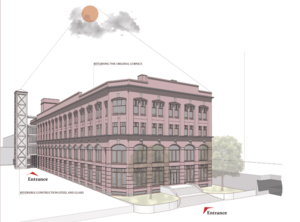
This work then became the site of their project in the Traditional Design Studio with Professor Steven Semes. The students compiled historic and recent drawings, documents, and photographs and made onsite surveys of existing conditions in the long-abandoned building designed by Solon Beman in 1895.
Based on their research, the students then made proposals for the conservation and adaptive reuse of the building for educational purposes such as a school of traditional building trades. The projects addressed the changing urban context around the building, defined preservation treatments for the historic building fabric, and designed alterations or additions needed to suit the proposed new uses. Guest critics at the final design reviews in December were Vincent Michael, John Cluver, and Carl Elefante.
“The adaptation of existing buildings is one of the most effective ways to decarbonize our building industries,” says studio critic and Duda Center Director Steven Semes. “It is essential that students entering the preservation field learn how to do this in ways that reduce carbon emissions and waste while, at the same time, conserving our cultural heritage. In adaptive reuse, historic preservation and sustainable development go hand-in-hand.”
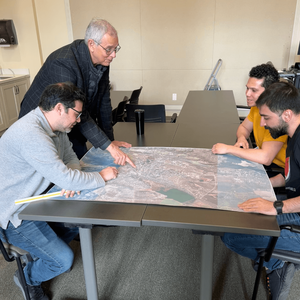
Center Updates
Senior Research Associate Carl Elefante, former president and current senior fellow of American Institute of Architects (AIA), taught a one-week, mini-studio to first-year graduate students in historic preservation this fall semester (left). Students documented an example of a traditional building culture familiar to them, and then designed a building for a contemporary purpose drawing on the lessons of the traditional materials and methods. Projects included adaptations of building traditions from Africa, the Middle East, and Central America, demonstrating the applicability of traditional knowledge to present-day needs and values.
Fall 2023 
Dedication of the Michael Christopher Duda Center for Preservation, Resilience, and Sustainability
The Michael Christopher Duda Center was dedicated in the fall semester 2022 in a ceremony and Mass presided over by University of Notre Dame President, Father John Jenkins, C.S.C. It was attended by University Provost John McGreevy, School of Architecture Dean Stefanos Polyzoides, members of the School faculty, and members of the Duda family, benefactors of the endowment that supports the Center. Named after the Dudas’ late son and Notre Dame School of Architecture alumnus, Michael, the Center has the dual mission of funding the Master of Science in Historic Preservation (MSHP) degree program and promoting research and advocacy related to the three themes in the Center’s name.
Marking the founding of the Center was the installation of a bronze plaque in the Stoa of Walsh Family Hall of Architecture created by sculptor Andrew Wilson Smith, son of the late founder of the School’s classical program, Thomas Gordon Smith. The bronze relief depicts Michael Duda at his drafting board as a student in the School of Architecture before graduating and pursuing his career in real estate development and historic preservation in his native Dallas, Texas. Michael was also a member of the Board of the Texas Historical Foundation, where the family has also established an endowment to promote historic preservation projects in the state.
Andrew Smith described the sculpture process:
“I was approached by Dean Polyzoides in the spring of 2022 to create a commemorative plaque in honor of Michael Duda and the family’s gift in his memory. The theme of laurel leaves and an image of Michael at the drafting table were established at our initial meeting. It was also clear that the plaque should harmonize with the classical design of Walsh Family Hall. The pattern of laurel leaves that surround the composition was inspired by American Greek Revival mirror frames. Dean Polyzoides suggested that Michael should be depicted drafting an image of the Alamo to indicate his Texas roots and his interest in sacred architecture. The process included both artisanal and digital techniques: The composition of the plaque and the frame was produced by 3D printing but the sculpture of Michael was modeled by hand in clay. Neomek made the 3D scans for the digital model of the frame and text, and I sculpted the image of Michael at 150% of the final size. Neomek then scanned my clay model, integrated it into the digital model, and printed a high-resolution model at full scale. The model then went to the foundry, Chicago Crucible, where the bronze was cast using the ancient ‘lost wax’ technique and given its final patina. The sculpture was installed just in time for the dedication."
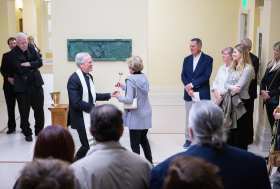
In his remarks celebrating Mass, Father Jenkins noted the ties between the study of architecture and historic preservation and our collective obligation to safeguarding “our common home,” in the words of Pope Francis’s encyclical Laudato si. The Duda Center’s mission is to promote the convergence between conservation of the built heritage of buildings, cities, and landscapes and the need to render our present environment more beautiful, sustainable, and just.
The Duda family’s gift enables the School to expand its leading-edge curriculum in traditional architecture and urbanism, hire new faculty, sponsor national and international conferences, promote research in the field, and provide financial assistance to graduate students enrolled in the Master of Science in Historic Preservation degree program. Though housed within the School of Architecture, the Center is an essential resource for University-wide teaching and research in the fields of historic preservation, community resilience, and environmental sustainability.
Michael Christopher Duda Center 2023 Visiting Fellow: Carl Elefante, FAIA
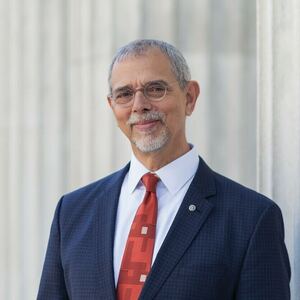
Last fall, Carl Elefante, FAIA, former president of the American Institute of Architects and a leading expert in the convergence of historic preservation and sustainability worldwide, delivered the inaugural Duda Center Lecture. It was he who coined the phrase, “The greenest building is one that is already built”—which might well serve as the Duda Center’s motto. Carl is also a member of the Duda Center Board of Advisors.
Carl’s lecture was so well received that he was invited to be the inaugural Duda Center Visiting Fellow. This fall semester he joins us to pursue his research on a book in progress, meet with students and faculty, offer talks and workshops, participate in classroom activities, and keynote the Duda Center-sponsored conference on historic preservation and sustainable new development.
“Global response to climate change is accelerating astronomically, arguably with over-reliance on technological solutions and building-our-way to a decarbonized future,” he explained. Carl’s presentation, entitled “Historic Preservation: The Overlooked Climate Imperative,” views today’s challenges through the lenses of stewardship and traditional knowledge, the foundational values of historic preservation. The talk is available online.
Carl’s mission while he is at the School of Architecture is to “send a message to the architects in the Global North that we are not yet on the right path.” Carl will be working on what he describes as a “Call to Action,” a “manifesto” urging a change in direction by architects who have an essential role to play at the center of the nexus between heritage conservation and new sustainable technologies.
Carl writes: “Indigenous and traditional building principles and practices have shaped a breathtaking array of built form worldwide. These traditions have stood the test of time and predate industrial-era dependence on fossil fuels for manufacture, construction, and operation. The challenge of the climate crisis provides new relevance to these cultural perspectives and regionally adapted solutions. Far too little is known about them and even less is understood about opportunities to evolve and scale them to address 21st century circumstances.”
Carl will join us on campus for four visits during the semester: September 10-14, September 24-30, October 8-12, and November 12-16. Watch for news about his visits in upcoming editions of the newsletter.
Congratulations to the MSHP Class of 2024
This May, a diverse, international, and enthusiastic inaugural class of five students completed their first year in pursuit of the Master of Science in Historic Preservation (MSHP), a graduate degree program underwritten by the Michael Christopher Duda Center for Preservation, Resilience, and Sustainability. The Center funds full-tuition fellowships and provides support for other educational expenses, such as student travel, guest lectures, and special events.
The MSHP curriculum is unique in combining preservation and sustainability in a comprehensive approach. While both of these subjects are currently widely taught in universities, few schools include both in the same curriculum and none do so in the context of traditional architecture and urbanism considered as both history and contemporary practice.
The fall and the spring semesters included design studios with a conservation focus. In their introductory fall Traditional Design Studio, the students documented and presented conservation and expansion plans for the 1845 Greek Revival John Howe House in Howe, Indiana. With Professors Todd Zeiger and Steven Semes they prepared measured drawings that were submitted for the Historic American Buildings Survey of the National Park Service and designed conservation plans for the site including additions to return the house to residential use.
During the spring semester Urban Conservation Studio, students worked with local organizations in South Bend to survey the Near Northwest Neighborhood and propose guidelines for community regeneration, ultimately producing a comprehensive report on the heritage, conservation, and sustainable development of the area. Professor Nick Rolinski, with guest critics Kathy Schuth, executive director of the Near Northwest Neighborhood Association, urban designer Mike Watkins, and South Bend historic preservation administrator Adam Toering, led the students to survey existing conditions and propose criteria for future development of both the physical setting and the neighborhood’s social, cultural, and economic resources.
Other courses during the first year cover the history and theory of historic preservation, research and documentation of historic sites, introduction to traditional urbanism, American historic building cultures, and traditional materials and construction methods.
The class also engaged in summer fieldwork opportunities providing hands-on experience in preservation work. Three students are joining a team of preservation specialists at Lynnewood Hall, a Horace Trumbauer-designed landmark near Philadelphia. One of the largest and most elaborate residences from the early 20th century, the site is in urgent need of restoration and adaptation to new uses. Another student has joined a team sponsored by the National Park Service to analyze the needs of historic sites in Puerto Rico after recent hurricanes and other environmental hazards, and another will assist Indiana Landmarks and Kil Architecture in South Bend on current preservation projects.

The students have left for study in Rome with Professor Paolo Vitti and conservation practitioners to document and propose the conservation of a medieval Gothic church in Sardinia, as well as visit current project sites and conservation laboratories in Rome and elsewhere in Italy. In their final semester next spring, the students will pursue their individual thesis projects, which may be either in the form of a design proposal with a conservation and sustainability focus or a research project examining a relevant subject. Throughout the program, themes of preservation, resilience, and sustainability are at the heart of each course.
The second entering class arrived on campus at the beginning of August and, after a three-week introductory course, will start the sequence again. Follow the progress of both classes in upcoming editions.
Faculty Profile
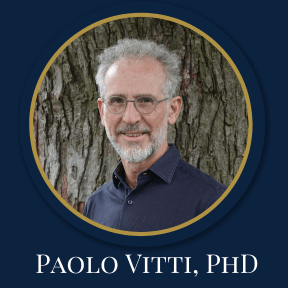
Paolo Vitti is a practicing architect and historian of architecture, an international expert in ancient and modern construction techniques, conservation of cultural heritage sites, and sustainable architecture. Prof. Vitti is particularly interested in the use of traditional materials and building techniques and their relationship with sustainable architecture. He also notes the increasing role of the community in historic preservation: “"Heritage preservation is about the community and the way experts meet their expectations."
His professional experience includes the documentation, study, and conservation of several sites in Italy, Greece, Turkey, Tunisia, Cyprus, Palestine and Morocco. He has worked on such monuments as the Colosseum, the Domus Tiberiana on the Palatine Hill, the archeological sites of Paestum and Sybaris, and Maqam en Nabi Musa in Jericho. His restoration of the Armenian Church and Monastery in Nicosia, Cyprus received the "European Heritage Award/Europa Nostra Award" in 2015. He is currently engaged in research on the Mausoleum of Hadrian, or as it is commonly known, the Castel Sant’Angelo in Rome.
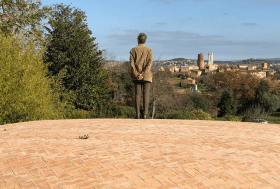
His book Building Roman Greece: Innovation in Vaulted Construction in the Peloponnese received the Grand Prix "European Union Cultural Heritage Award / Europa Nostra" and "The Erma di Bretschneider Award in archeology for research," both in 2014. He is Board Member of Europa Nostra, the pan European association for Cultural Heritage, and part of the expert group on issues related to climate change.
Paolo Vitti was born and lives in Rome, where he graduated in Architecture (1990) and Specialized in Restoration of Built Heritage (1996). He holds a PHD from the Aristotle University of Thessaloniki (2013). This fall semester, he will be leading the graduate studio in historic preservation in Rome.
Research Initiatives of the Michael Christopher Duda Center
Interdisciplinary Research at the Intersection of Historic Preservation and Sustainable Building
The climate crisis calls us to immediate action. We are already seeing the effects of worsening weather conditions and migration caused by the changing climate, posing a threat to communities worldwide. Sustainable development requires a more balanced use of natural resources and a radical change from the current globalized consumeristic approach.
The future of our Past, published in 2019 by ICOMOS and the European Cultural Heritage Green Paper by Europa Nostra in 2021 argue that the needed change cannot be successful without considering the role of cultural heritage. We can learn a lot from the past, particularly from building cultures whose use of natural resources was more balanced and direct.
In his 2015 encyclical Laudato Si’ Pope Francis underlined that preserving our identity is closely connected to the history, culture and architecture of places but the progress of modernity has too swiftly separated us from the past. Uncritical belief in the promises of modernity has impacted many parts of the world where different cultures and different kinds of human relationships have been sacrificed in favor of those imposed by the West. Pope Francis called for “greater attention to local cultures when studying environmental problems, favoring a dialogue between scientific-technical language and the language of the people.”
The School of Architecture and the Michael Christopher Duda Center seek to activate research in this direction, to study local and regional building practices and identify those that are sustainable or can readily be rendered so with the help of current technological innovations.
The Duda Center is reaching out to other components of the University to identify and stimulate the extraordinary expertise available and promote a more interdisciplinary approach to research. At the end of the fall semester, Professor Paolo Vitti organized a meeting of over two dozen Notre Dame faculty, half from the School of Architecture and half from a variety of disciplines, including anthropology, classics, engineering, physics, and sustainability studies. We discovered a strong interest in pursuing interdisciplinary research directions and these spontaneously arranged themselves around three central themes: Culture, Economy, and Technology. Participants agreed to study forming research teams to apply for University grant programs designed to encourage precisely this kind of interdisciplinary work. Follow up discussions and meetings are ongoing and future announcements of specific proposals are expected in the fall semester.
Contact: Associate Professor of the Practice Paolo Vitti